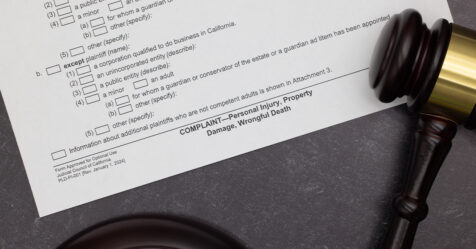When managing a business, every decision corresponds with cost. This includes the costs associated with facility maintenance and management, such as electricity and water usage, repairs and cleaning services, and supplies. Yet, as any facility manager can tell you, it’s often these costs that management reduces or eliminates when budgeting.
However, many decision-makers are unaware of the impact cleaning can have on their business, including how it can strengthen, or weaken, a company’s bottom line. They don’t often make the connection that implementing proper and effective cleaning can directly affect employee attendance and productivity, asset preservation, and customer satisfaction—and how that translates into a drain on the business.
Helping decision-makers change the way they view cleaning—not as a cost but as an investment—can go a long way to preserving budgets while improving the business. The key is to speak their language when making a business case for proper cleaning.
Employee Attendance and Productivity
On an operational level, proper cleaning techniques can impact overall employee health and well-being. When a building isn’t clean, it can result in numerous concerns for its occupants with the increased risk of illness and decreased morale being the most critical. Dirty facilities lead to a cycle of consistent germ and bacteria spread, increasing the likelihood of sick employees.
Employee illness then negatively affects a business in one of two ways: absenteeism or presenteeism. Ultimately, both can lead to losses for employers, including hidden labor replacement costs and the price of lost productivity.
Absenteeism refers to when workers are unable to come to work due to illness. According to a study published by the Journal of Occupational Environmental Medicine, this health-related time loss can cost employers up to us$225.8 billion per year. When an employee is sick, it can have a deeper level ripple effect across the company. For companies using highly educated and skilled workers, it’s more difficult to find substitutes for sick workers and still retain productivity rates. This can cause worker outputs to suffer, which negatively affects production times, sales results, and customer satisfaction. There are also hidden costs to absenteeism, as employers often fail to account for the expenses involved in managing these absences, including tracking, reviewing, and processing the absence. These costs quickly add up, and impact the company at various levels.
Presenteesim, or when employees come to work sick and experience limited productivity, can cost businesses up to $250 billion per year, per a survey conducted by Advance PCS Center for Work and Health. Being preoccupied with illness can lead to additional time spent on tasks, decreased quality and quantity of work, lack of initiative, and the transmission of viruses and illnesses to coworkers.
Asset Protection
Cleaning techniques also have a profound impact on asset preservation. Facilities and the items housed in them are financial assets to any company, which makes it important to take care of them and reduce the need for additional maintenance. Maintaining regular, diligent cleaning methods can contribute to the longevity of these types of assets, including flooring, lighting fixtures, and furniture.
For example, facility professionals may overlook carpet, which can become damaged and worn out more quickly if neglected. However, regular carpet cleaning and upkeep can cut down on the cost of replacement and extensive maintenance. In fact, The Carpet and Rug Institute estimates that a properly cared-for carpet can last up to three times longer than one that is not well maintained. And not only are properly maintained commercial carpets and flooring more durable, they’re also more visually appealing.
Customer Satisfaction
Some executives consider cleaning an operational cost, but if a building lacks cleanliness, this can cost businesses revenue and impact consumer perception.
In 2010, Procter & Gamble Professional facilitated a survey regarding the cleanliness of fast food and quick-serve restaurants. Survey participants listed cleanliness as the highest correlation to customer satisfaction at these establishments. Similarly, Chain Store Age took a look at “store atmospherics,” which are elements retailers implement in stores to positively influence the shopping experience. These results echoed those from the Procter & Gamble survey, identifying cleanliness as the most important factor for shoppers.
Consumers consciously decide where they will purchase goods and services based on a variety of factors, including the perceived cleanliness of where they are shopping. This decision-making process can affect the ability for businesses to meet their revenue expectations.
Connecting Costs to Clean
While this information may be compelling in and of itself, executives will be most concerned with how to quantify these costs and savings. The Value of Clean® downloadable whitepaper, available at www.issa.com/value, provides valuable formulas and other resources for calculating the various savings associated with effective cleaning, with models tailored to:
- Productivity and absenteeism
- Surface life-cycle cost
- Asset life-cycle cost
- Asset preservation.
Facility professionals can use each of these calculations to provide solid data for how cleaning can positively impact a company’s bottom line. Making the connection between this data and its correlation to reductions in workflow disruptions, higher worker productivity, and overall higher company performance is essential to solidifying the need for these types of services in any industry.
The effects of proper cleaning are more far reaching than many of us realize, and when the time comes to make budgetary decisions, it’s worthwhile to include cleaning as an essential element of company planning. When comparing budgetary constraints with the potential savings from improving cleaning standards, a strong case emerges for spending the money to eliminate these types of costs.




